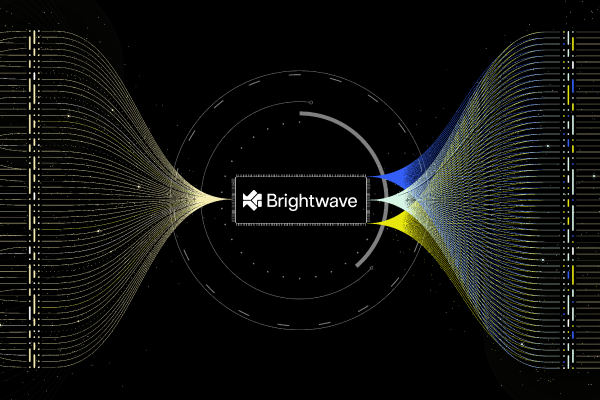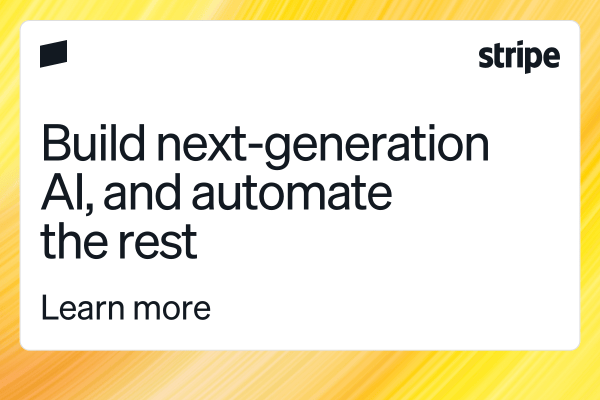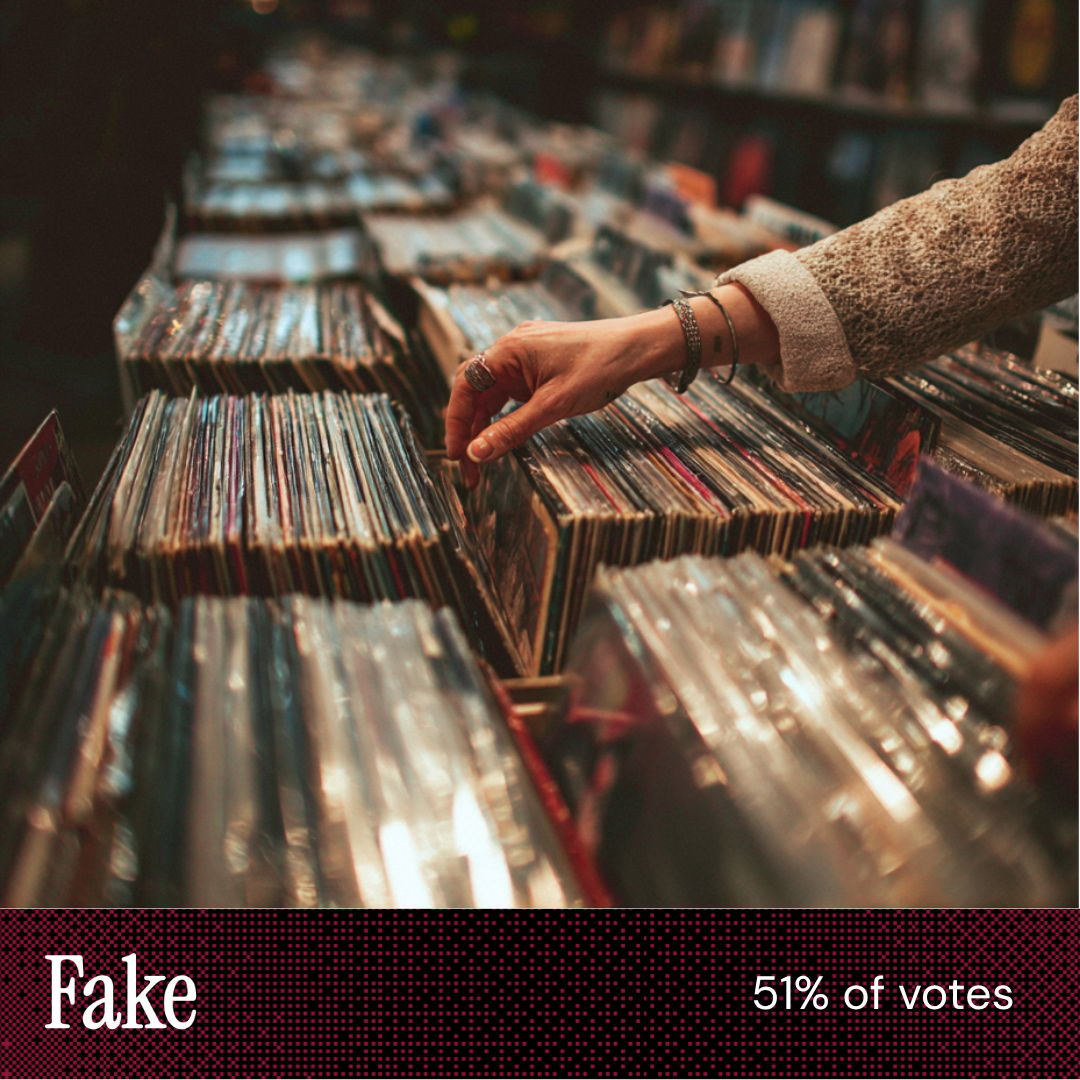Anthropic, Google partner on TPUs
October 24, 2025
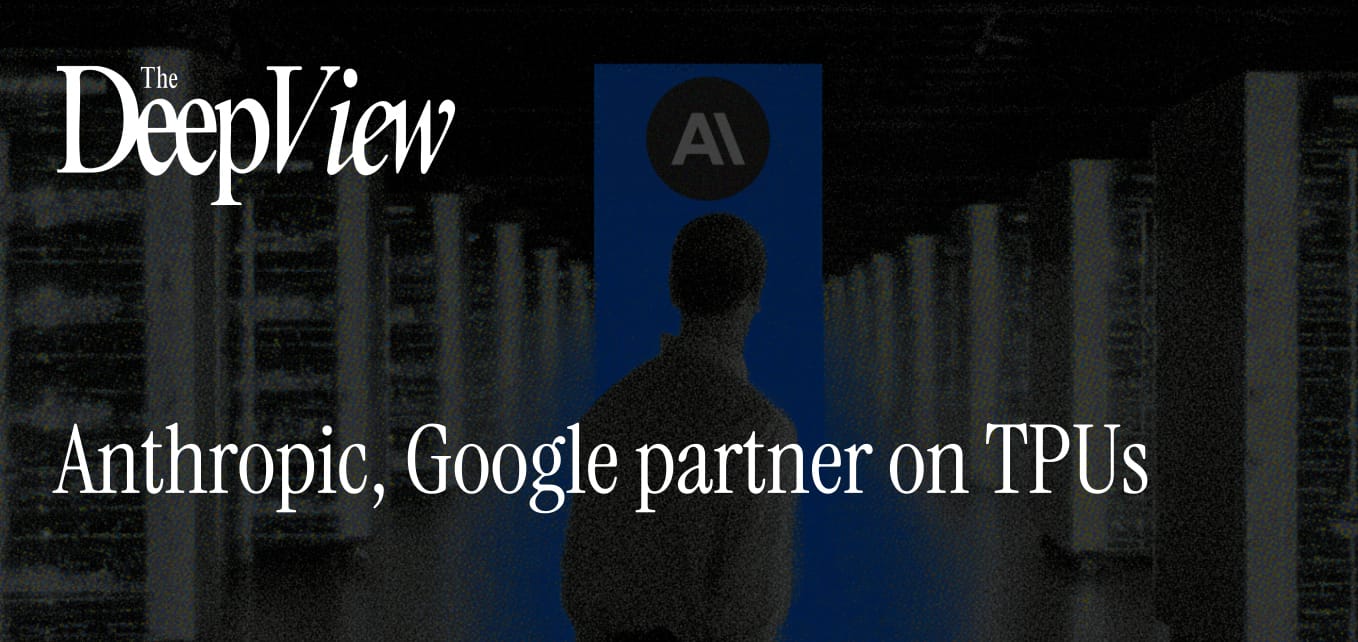
Welcome Back. On Thursday, OpenAI announced its acquisition of Software Applications Inc., the maker of Sky, a natural language interface for Mac. Sky uses the information on users’ screens to work alongside them and complete tasks with their apps. Nick Turley, OpenAI vice president and head of ChatGPT, said in a statement that Sky will help build a future where the platform can do more than respond to prompts, but rather “helps you get things done.” The deal could give OpenAI access to the essential piece that gives AI actual utility: user context.
IN TODAY’S NEWSLETTER
1. Anthropic, Google partner on TPUs
2. Alibaba targets consumer market
3. Robotaxi deals speed up
HARDWARE
Anthropic, Google partner on TPUs

Anthropic isn’t putting all of its eggs in one basket.
The AI firm announced a cloud partnership with Google, giving it access to more than one million of the search giant’s Tensor Processing Units, or TPUs. The deal gives Anthropic “well over” a gigawatt of compute capacity by 2026, adding yet another project to the frenzy of compute deals that have taken the AI industry by storm.
Though the exact financial terms of the deal weren’t released, Anthropic noted in its press release that the expansion is “worth tens of billions of dollars.” It also said that it intends to invest in additional compute capacity to continue building its models.
We can't wait to see what you build!
— Google Cloud (@googlecloud)
10:19 PM • Oct 23, 2025
“Anthropic and Google have a longstanding partnership and this latest expansion will help us continue to grow the compute we need to define the frontier of AI,” Krishna Rao, CFO of Anthropic, said in the announcement.
The deal highlights that Anthropic is spreading the love amongst several different chip firms to build its AI empire. The company noted in its press release that it primarily relies on three kinds of chips: Google’s TPUs, Amazon’s Trainium, and NVIDIA’s GPUs.
While Nvidia has largely held the AI chip spotlight, Anthropic and Google’s partnership underscores that the chip firm isn’t the only fish in the pond … just the biggest. By a long shot.
AMD, similarly, has put up a fight against Nvidia’s chip dominance, announcing a partnership with Oracle last week to deploy 50,000 of its chips in data centers starting next year.

Anthropic’s play is smart. By spreading its bets across several different chipmakers, it’s not going all-in on the Nvidia bandwagon as demand for its chips soars to new heights. Portioning its workloads among different chip providers allows it to strike a better balance between cost and performance than it would if it were locked into a single vendor. Plus, this architecture can certainly help it avoid service blackouts if something goes awry with one of its providers, such as Monday’s AWS outage.
TOGETHER WITH BRIGHTWAVE
Is professional-grade AI the next step?
ChatGPT chokes when large datasets are on the line. Brightwave doesn't.
In fact, the platform can:
Process 2,000+ documents with no loss of fidelity
Weave facts across hundreds of sources into coherent, evidence-backed analysis
Link every finding to primary sources at the sentence level
Edit sections individually without losing your work — no more black-box outputs that vanish when you add context
Generate comprehensive reports in minutes that would take teams days
Brightwave's autonomous research agents surface patterns competitors miss, flag critical risks automatically, and deliver finished deliverables on-demand across preliminary research, due diligence, and ongoing monitoring.
Organizations, like top-5 PE megafunds to boutique firms are seeing 25x speed improvements on research-intensive workflows.
This is AI built for professionals who need to understand the world's most complex problems. Learn more here.
CONSUMER
Alibaba targets consumer market

Alibaba may be fighting for the consumer AI market.
The Chinese tech giant launched a free-to-use chatbot on Thursday, integrated into its Quark app, the company’s primary consumer app. The move puts it in direct competition with other Chinese tech firms like Bytedance and Tencent, and marks a stark shift from the enterprise AI focus it’s taken thus far.
The chatbot isn’t Alibaba’s first stab at the consumer space. The company launched an app called Tongyi in 2023, which largely flopped in comparison to offerings by other tech firms in the country.
The release highlights a growing interest in capturing the consumer AI market. And as the company seeks to keep up with the massive infrastructure race by pouring roughly $53 billion into its AI development over the next three years, Alibaba could be looking for ways to siphon returns.
It’s an interest reflected in similar moves by U.S. firms: On Thursday, Amazon (which targets several markets similar to Alibaba's in ecommerce and cloud) rolled out its own consumer-focused AI tool called “Help Me Decide,” which recommends products to indecisive shoppers.
And Alibaba might have a leg up over U.S. firms, as the consumer market may be easier to capture in China than in the U.S.: According to Stanford University’s Human-Centered AI index report, released in June, while global optimism around AI is growing, the belief that AI can do more good than harm is far higher in China than it is in the U.S., sitting at 83% and 39%, respectively.
TOGETHER WITH STRIPE
Monetizing AI products: Nimble experimentation and scale
Rapid AI growth creates a hidden problem: your payments and billing infrastructure becomes the bottleneck to your growth. While some struggle with operational complexity, companies like ElevenLabs and Runway built systems that scale effortlessly with user growth.
Stripe’s AI scaling playbook unpacks those companies’ blueprint for hyper-growth and eliminating operational drag. These leaders automated billing complexity and designed a pricing strategy that adapts with their business. As a result, teams can focus on building next-generation AI products for users, while their billing and revenue operation largely runs itself.
Ready to eliminate the scaling bottleneck? Get the playbook right here
PRODUCTS
Robotaxi deals speed up
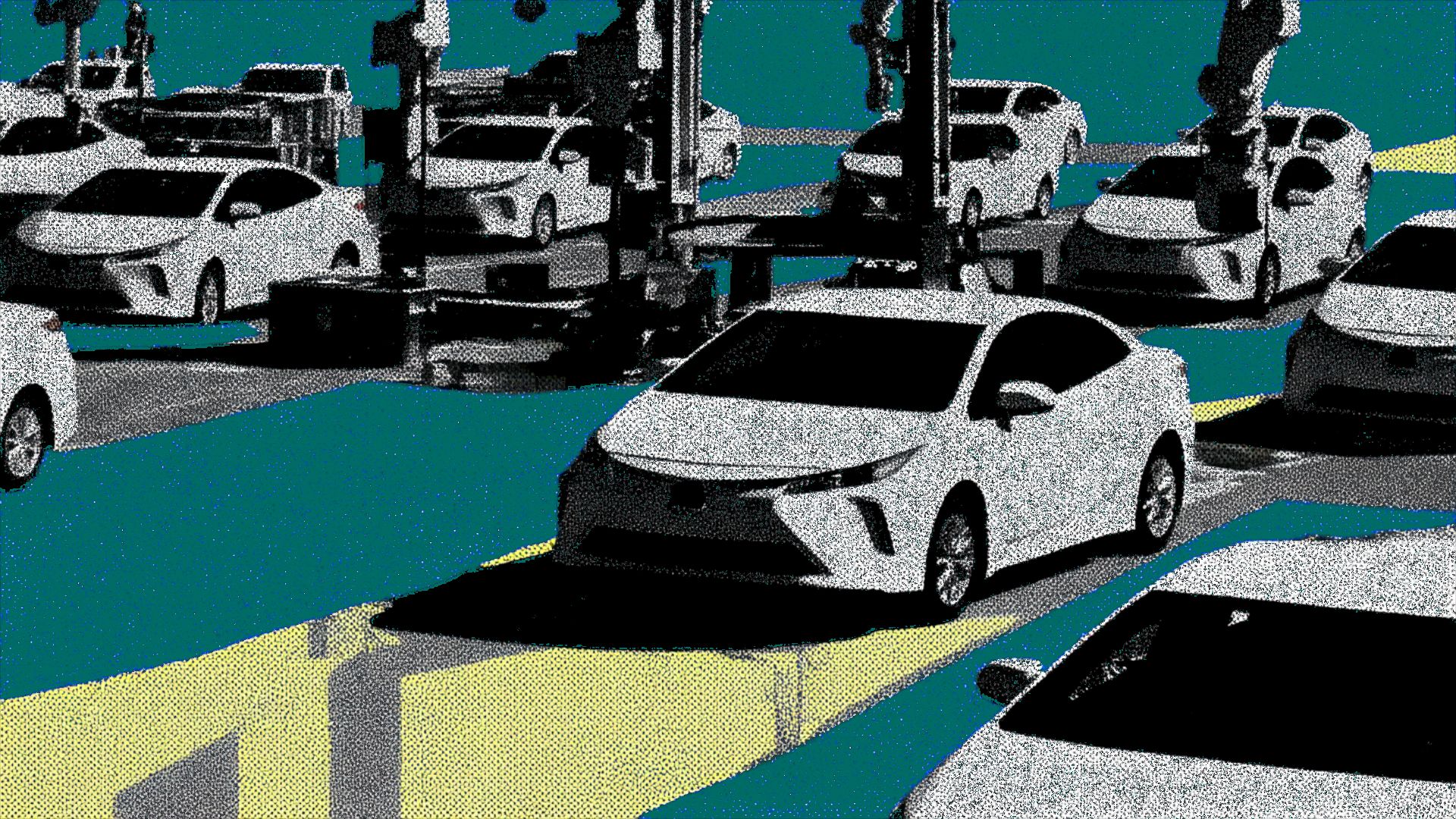
It’s been a big week for robotaxis.
On Thursday, Neolix, a Chinese manufacturer developing unmanned delivery vehicles, announced a $600 million funding round. The company will invest the proceeds into developing its algorithm and hardware.
Neolix is just the latest of several robotaxi firms making moves this week, signaling increasing interest in the space as AI weaves its way through every industry, including traditional service jobs.
On Wednesday, Uber and Nebius committed up to $375 million to the development of Avride, Nebius’s autonomous vehicle subsidiary. Avride also announced a partnership with Grubhub on Thursday to expand robotic food delivery.
On Tesla’s earnings call on Wednesday, CEO Elon Musk promised to remove safety monitors from its robotaxis and launch in up to ten new markets by the end of 2025.
On Tuesday, Chinese self-driving firm Zelostech announced an additional $100 million in funding led by Alibaba-owned Ant Group.
And late last week, Stellantis announced a partnership with Pony AI to start testing out autonomous vans in Luxembourg, laying the groundwork for its own robotaxi service.
Investment, development and deal activity might be trending alongside consumer attention. Waymo, for example, reached 10 million robotaxi trips back in May, doubling its total rides in a five-month span.
But the tech’s popularity could spell trouble for taxi and rideshare drivers: One study by researchers from the George Washington University published in December found that the onset of robotaxi services could cut the total number of frontline jobs between 57% and 76%.
LINKS

Microsoft won’t build AI chatbots for erotica, AI chief Mustafa Suleyman says
Wonder Studios, backed by OpenAI, raises $12 million to bring AI to entertainment
OpenAI, Oracle, Vantage Data Centers to develop Stargate campus in Wisconsin
Amazon debuts AI-powered smart glasses for delivery drivers
Palantir, Lumen enter $200 million partnership for enterprise AI
DeepSeek pushes into Africa with cheaper, more efficient AI
A16z eyes new $10 billion fund, with $3 billion dedicated to AI
OpenAI teases Sora updates, including pet cameos, video editing tools

Annotate Mode: A new vibe coding tool in Google AI studio that allows you to draw what you want and have Gemini handle the coding.
LTX-2: An open source AI engine for audio and video generation, with 4K fidelity and up to 50 frames per second.
Claude Desktop: Users of Anthropic’s chatbot can now capture screenshots, click windows to share context and communicate using voice.
Shared Projects: OpenAI has expanded its Shared Projects feature to Free, Plus and Pro users.
Company Knowledge: OpenAI launched a tool that connects all of your business apps together through ChatGPT, available to Business, Enterprise, and Edu users.
Microsoft Mico:Microsoft has rolled out a friendlier version of its AI companion, designed to be more personal and supportive.

A $100K Price Tag Just Changed How You Hire
Starting Sept 21, 2025, U.S. companies must pay $100,000 per new H-1B visa.
The result? Big Tech is freezing sponsorships, startups are priced out, and the search for talent just went global.
The smarter move: go remote.
Latin America offers top-tier engineers and AI talent in the same time zones—at up to 60% lower cost.
The future isn’t about moving people. It’s about moving work.
No visas. No $100K fees. Just brilliant teams, built globally.
(sponsored)
A QUICK POLL BEFORE YOU GO
With Anthropic leaning more on Google’s TPUs, are we starting to see real cracks in NVIDIA’s dominance? |
The Deep View is written by Nat Rubio-Licht, Faris Kojok and The Deep View crew. Please reply with any feedback.
Thanks for reading today’s edition of The Deep View! We’ll see you in the next one.

“I doubted the woman's hand/hidden fingers. I'm not sure what the other one is sorting through, but went with it.” “They both looks fake, but in the fake, the angle of the bracelets and space between the hand and where a person would be didn't seem natural.” “The hand has some scars and discolorations.” |
“Oh my! The hands and sweater were so well done! Very believable. I wish you’d share the prompt.” Sure! The prompt was “Hands sifting through vinyl records in a store --ar 3:4 --style raw --v 7” inside of Midjourney! “Hands seem more real, as do album covers” |

Take The Deep View with you on the go! We’ve got exclusive, in-depth interviews for you on The Deep View: Conversations podcast every Tuesday morning.

If you want to get in front of an audience of 450,000+ developers, business leaders and tech enthusiasts, get in touch with us here.

